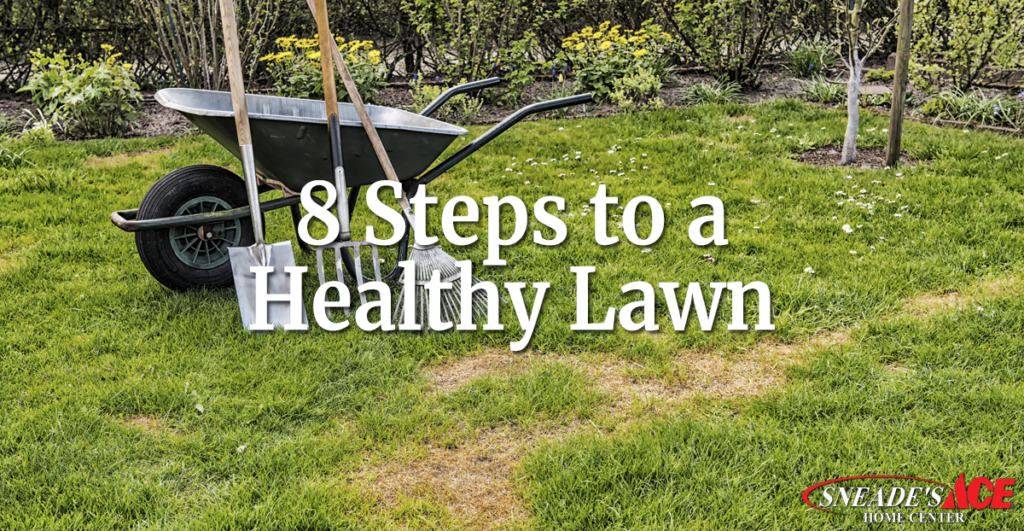
8 Steps To a Healthy Lawn
Summertime can wreak havoc on your lawn. Many long days of scorching heat followed by intense storms can do some real damage. Before long, your yard looks like a scorched out, dried up mess. It takes a little work, but it is not impossible to give your lawn a facelift. With patience and diligence, your hard work will pay off. However, while it may take two or three growing seasons, the results will be a beautiful lawn. How can you achieve what seems a gardening miracle? Follow these steps to a healthy lawn, and you will soon be the envy of the neighborhood!
Step 1: Remove Thatch and Weed Buildup
It is essential to remove the dead grass, A.K.A. thatch, and any weeds. Thatch is the un-decomposed stems and roots that accumulate near the soil surface. The best time to dethatch is in the spring or fall when your lawn is thriving.
Step 2: Fill Depressions and Level Any Bumps
Poor grading or uneven settling, caused by such issues as decomposition of buried tree stumps, logs, or roots can cause depressions and bumps. Consider marking irregularities with latex spray paint. That way, so you can find them easily when you are ready.
Step 3: Check and Adjust the Soil pH
It is best to test your soil before applying any weed and feed products. Never assume anything as you can do more harm by using nutrients without reason.
Step 4: Add Healthy Nutrients
You should never feed a stressed lawn. Adding nutrients without knowing what nutrients are required is like taking random medicine when you are sick.
Step 5: Appy Organic Matter
Applying fertilizer will not help if your soil does not contain an adequate population of healthy microbes. Ideally, your soil should include 2- to 5-percent organic material to encourage a thriving microbe population.
Step 6: Aerate Appropriately
Aeration allows the grass roots to penetrate the soil deeply and for fertilizer and organic matter to reach the roots. However, you should avoid aerating during dry summer months as this may damage an already stressed lawn. Also, avoid periods when weed seeds are prevalent as a way to prevent further weed infestation.
Step 7: Prepare the Surface and Spread Seed
- Use a thatching rake to loosen the exposed soil to a depth of ½-inch.
- Several days before applying the seed water the surface to 6-8 inches.
- Apply seed to the edges of the area you are sowing first.
- Divide your seed, and apply half while walking in one direction and the other half while walking in the opposite direction.
- Spread extra seed on bare areas, and lightly cover the seed with a mixture of compost and topsoil.
- Then spread more seed on top.
Step 8: Take Extra Care of New Growth
Once you sprinkle the seed, it is critical to apply water at least twice a day, for about 10 minutes. Assuming there is no rain. That way, the seedlings will germinate. Depending upon the area you live will determine how long it takes for the grass to grow. It can take anywhere between 3 and 28 days for new grass seed to begin to grow.
Ask the Experts
These steps to a healthy lawn are a great place to start reviving your stressed-out yard. Sneade’s Ace Home Center understands that your lawn is unique and may require personalized T.L.C. Have questions? We’ve got the answers! Stop into our garden center. Our qualified team can help you find the best products to get your grass green and lush again.
